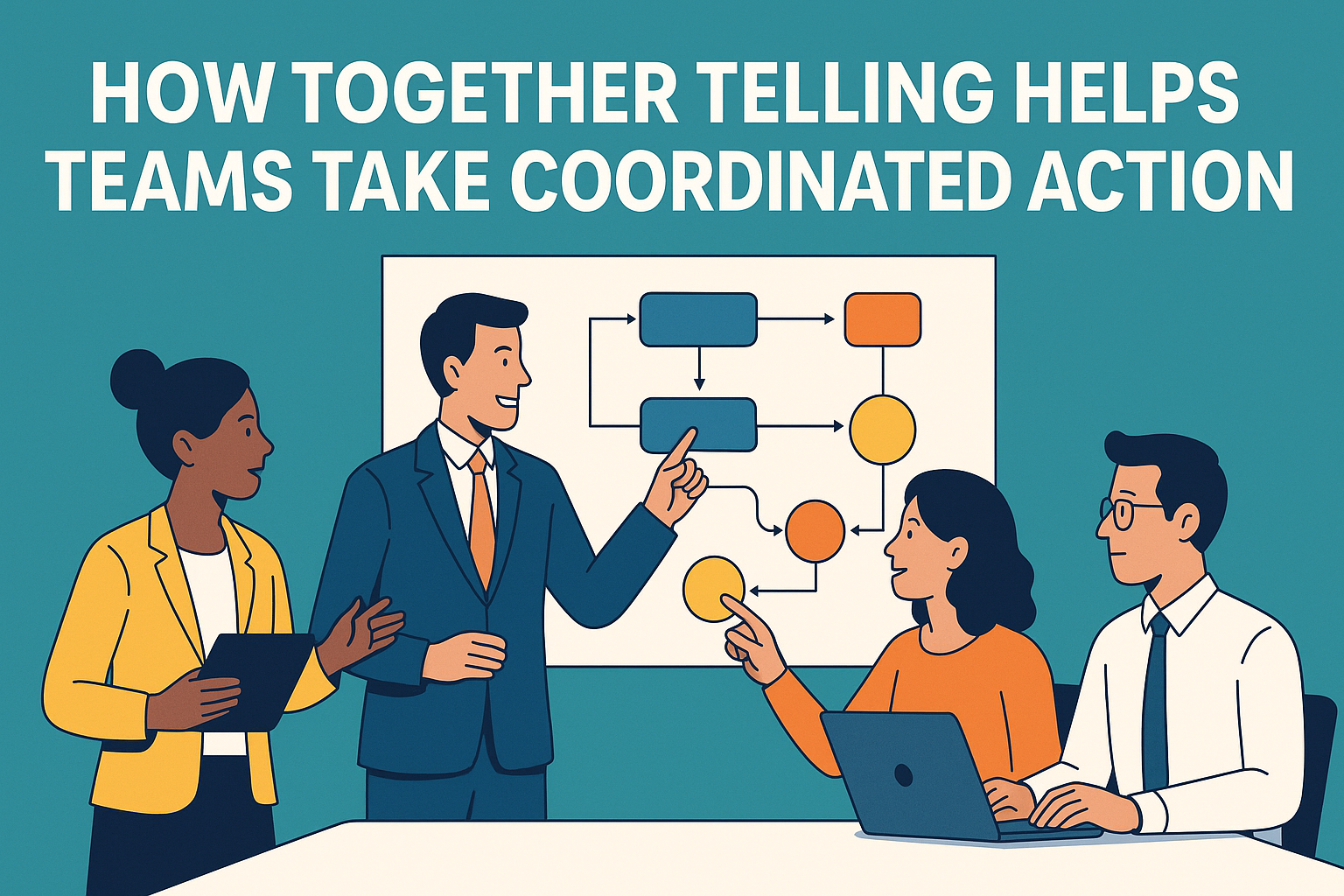
Introduction: Herding Cats? Nope. Just Another Day in Team Coordination
Let’s face it—getting a team to work in perfect sync often feels like trying to choreograph a flash mob where half the group didn’t get the memo and the other half is dancing to a completely different playlist. Coordination is the backbone of successful execution, but it’s also where most teams stumble.
When roles aren’t clear, priorities don’t align, and feedback gets lost somewhere in the digital void, teams waste time, energy, and a whole lot of patience. The result? Deadlines shift, projects derail, and everyone’s just trying to survive the next “quick sync.”
Here’s why coordinated action is so hard to pull off—and how Together Telling turns this chaos into a streamlined process.
Challenges in Coordinated Action (a.k.a. Why Is Everyone Doing Their Own Thing?)

1. Lack of Clarity in Roles and Responsibilities
“I thought you were handling that.” Famous last words in project management.
Why does it happen?
Vague role definitions.
Project scopes change, but no one updates responsibilities.
Everyone assumes someone else has it covered.
The Fallout:
Duplicate work or tasks falling through the cracks.
Team members stepping on each other’s toes, politely, of course.
Blame games when things go south.
Corporate Humor Moment: It’s like showing up to a potluck and realizing five people brought potato salad and no one brought forks.
Solution: Assign clear owners for each task with defined deliverables and deadlines. No more “group ownership” confusion.
2. Misaligned Priorities Among Team Members
You’re chasing sales goals, they’re chasing design perfection, and somehow, the client deadline is the only thing being ignored.
Why does it happen?
Different departments have different KPIs.
Lack of shared understanding of the project’s primary goal.
No one paused to ask, “Are we all solving the same problem?”
The Fallout:
Projects slow down as everyone pulls in different directions.
Meetings become turf wars.
The end product looks like it was made by three different companies.
Corporate Humor Moment: “Alignment” means something very different when Marketing wants a viral video and Finance wants to cut the budget.
Solution: Create shared priorities and a central objective everyone agrees on before executing.
3. Poor Feedback Mechanisms
Ever deliver a project and get feedback like, “This isn’t what I expected”? Yeah, that’s the sound of a broken feedback loop.
Why does it happen?
Teams only give feedback at the end of a project.
Feedback is vague, passive-aggressive, or just plain missing.
People avoid giving feedback because “it’ll just start another email chain.”
The Fallout:
Rework, delays, and an extra side of frustration.
Quality dips because no one knows what “good” looks like.
Teams stop trying because “what’s the point?”
Corporate Humor Moment: Feedback loops without structure are just venting sessions dressed up as meetings.
Solution: Build feedback into every phase, make it actionable, and normalize asking for clarity.
How Together Telling Facilitates Coordination (a.k.a. We Herd Cats So You Don’t Have To)

1. Developing Structured Action Plans for Teams
We help teams stop “winging it” and start executing with precision:
Break down projects into clear milestones and checkpoints.
Assign specific owners and timelines.
Establish regular review sessions to keep things on track.
Result: Everyone knows their lane, their deadline, and what “done” actually means.
2. Providing Clear Frameworks for Defining and Aligning Responsibilities
Goodbye, chaos. Hello, clarity.
Implement RACI matrices (Responsible, Accountable, Consulted, Informed).
Train teams on how to communicate ownership clearly.
Align cross-functional teams with shared language and understanding.
Result: No more “I thought you had it” moments. Just smooth, coordinated execution.

Final Thoughts: Coordinated Teams Win, Confused Teams Just Have More Meetings
The difference between a high-performing team and a flailing one often comes down to coordination. Not talent. Not effort. Clarity and alignment.
At Together Telling, we turn team chaos into choreography. Our frameworks help teams know what’s expected, stay aligned, and get things done, without the endless status updates.
Backlink Source:
Harvard Business Review: Effective Team Coordination

